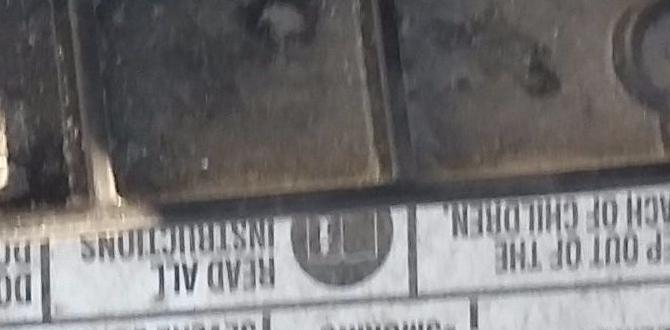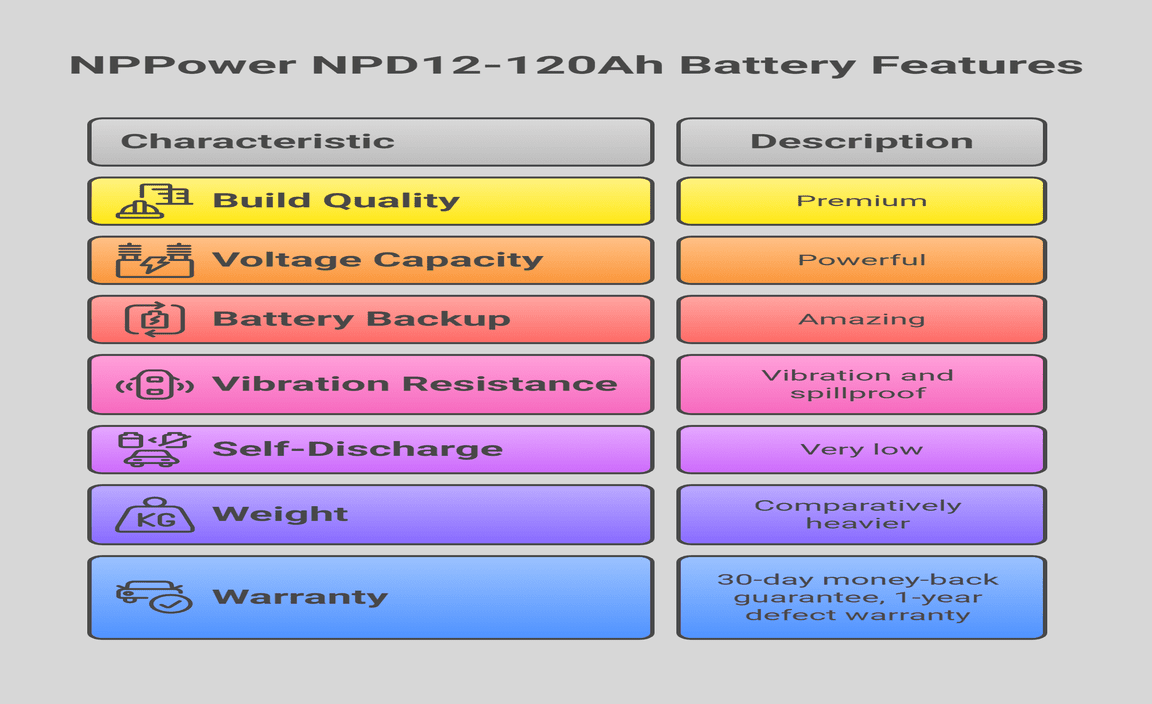Quick Summary:
Finding the right battery charger for your Prius is crucial for maintaining its hybrid system. For the main hybrid battery, specialized chargers are rarely needed for owners, as the car manages it. However, if you’re looking to charge the 12-volt auxiliary battery or have specific needs, a quality trickle charger or smart charger is usually best. Always confirm compatibility before purchasing to ensure safe and effective charging.
So, you’ve got a Prius, a car known for its smart hybrid system that sips fuel. That means it has two batteries: a big hybrid one that powers your car and a smaller 12-volt battery that starts it up and runs the electronics. Most of the time, the car takes care of the big hybrid battery all by itself. But sometimes, that smaller 12-volt battery might need a little boost, especially if your car sits for a while. It can be a bit confusing, right? Don’t worry! This guide will walk you through exactly what you need to know about keeping your Prius’s batteries happy and healthy, focusing on the types of chargers that work and how to use them safely. We’ll make it simple, just like checking your tire pressure, so you can get back on the road with confidence.
Understanding Your Prius Battery System
Your Toyota Prius uses a sophisticated hybrid system that includes two distinct batteries working in harmony. The star of the show is the high-voltage hybrid battery pack that provides power for electric-only driving and assists the gasoline engine. This massive battery is designed to be self-sustaining, constantly recharged by regenerative braking and the gasoline engine. As a Prius owner, you generally don’t need to worry about manually charging this large hybrid battery.
The other crucial component is the conventional 12-volt auxiliary battery. Think of this as the “starter” battery. It’s responsible for powering your car’s accessories when the hybrid system isn’t active, like your headlights, radio, power windows, and crucially, it provides the initial power to “wake up” the hybrid system and start the gasoline engine. While the hybrid system does help keep the 12-volt battery topped up, it can sometimes run low, especially in certain situations like prolonged inactivity or if accessories are left on.
The 12-Volt Auxiliary Battery: Your Main Concern for External Charging
When people ask about a “battery charger for Prius,” they are almost always referring to the 12-volt auxiliary battery. This is the one that sits under the hood or in the trunk, much like in a traditional car. Unlike the hybrid battery, the 12-volt battery can drain and may need external charging in specific scenarios:
- Infrequent Driving: If your Prius isn’t driven regularly, the battery may not get enough charge from the car’s system.
- Extreme Temperatures: Both very hot and very cold weather can impact battery performance and charge retention.
- Accessory Use: Leaving lights, radio, or other electronics on for extended periods with the car not running can drain the battery.
- Battery Age: Like all batteries, the 12-volt battery has a lifespan, and older batteries may not hold a charge as well.
When Do You Actually Need a Battery Charger for Your Prius?
It’s important to understand that the Prius’s hybrid system is designed to manage the 12-volt battery quite effectively. The hybrid system will activate charging for the 12-volt battery whenever it detects it’s getting low, provided the main hybrid battery has sufficient charge. So, needing an external charger is not a common, everyday occurrence for most Prius owners. However, there are specific times you might consider it:
- Troubleshooting: If you’re experiencing starting issues, dashboard warning lights related to the electrical system, or your Prius seems “dead,” a low 12-volt battery could be the culprit.
- Pre-emptive Maintenance: If your car has been sitting unused for several weeks or months, a gentle charge can help ensure it starts up fine.
- Battery Replacement Prep: In some rare cases, when replacing the 12-volt battery, you might use a charger to fully top it off before installation, though this isn’t always necessary.
Remember, the large hybrid battery in your Prius is a sealed unit designed for high voltage and current. Attempting to charge it with a standard automotive charger would be ineffective and potentially very dangerous. Always focus your charging efforts on the smaller, conventional 12-volt auxiliary battery.
Choosing the Right Battery Charger: Key Features
For the 12-volt auxiliary battery in your Prius, you’re looking for a charger that is safe, smart, and doesn’t overcharge. Here’s what to look for:
1. Smart Chargers (Microprocessor Controlled)
These are the gold standard for modern battery charging. A smart charger uses a microprocessor to monitor the battery’s voltage and current, adjusting the charging process as the battery reaches full capacity. This prevents overcharging, which can damage the battery and reduce its lifespan.
- Automatic Shut-off: They stop charging when the battery is full.
- Multi-Stage Charging: They often use several stages (e.g., bulk, absorption, float) for optimal charging.
- Battery Desulfation: Some have a mode to help break down sulfate crystals that can form on battery plates, potentially extending battery life.
- Reverse Polarity Protection: A crucial safety feature that prevents damage if you accidentally connect the clamps incorrectly.
2. Trickle Chargers
A trickle charger delivers a very low, slow charge to the battery. They are often used for long-term maintenance and are ideal for batteries that are stored for extended periods. They deliver a small amount of current, just enough to counteract self-discharge. They are generally safe but might not be sufficient to revive a deeply discharged battery quickly.
- Low Amperage: Typically 1-2 amps.
- Good for Maintenance: Excellent for keeping a battery topped up.
- Slower Charging: Takes longer to charge a depleted battery compared to a standard charger.
3. Battery Maintainers
Similar to trickle chargers, battery maintainers are designed to keep a battery at its optimal charge level. They are often more sophisticated than basic trickle chargers and are ideal for vehicles that are not driven daily. They typically monitor the battery and supply small amounts of power as needed.
4. Standard (Manual) Chargers
These are less recommended for Prius batteries. Manual chargers require you to set the amperage and monitor the charging process yourself. Without careful attention, you can easily overcharge and damage the battery. For a car with a complex electrical system like a Prius, it’s best to use a charger that manages itself.
Important Considerations for Prius Chargers
When selecting a charger, keep these specific points in mind for your Prius:
- Battery Type: The 12-volt auxiliary battery in most Priuses is a standard lead-acid or AGM (Absorbent Glass Mat) battery. Ensure your charger is compatible with these types. AGM batteries often require slightly different charging profiles, so check your manual.
- Amperage Rating: For a 12-volt auxiliary battery, a charger with an amperage output between 2A and 10A is generally safe and effective. Higher amperage chargers can charge faster but increase the risk of damage if not properly managed. For maintenance, 1-2A is usually plenty. For a discharged battery, 5-10A is a good range.
- Safety Features: Always prioritize chargers with safety features like reverse polarity protection, short circuit protection, and spark-proof clamps. This is especially important when working around a car’s sensitive electronics.
Recommended Charger Types for Prius Owners
Based on the above, here are the types of chargers that are generally recommended for a Prius’s 12-volt auxiliary battery:
Recommended for Maintenance and Light Charging:
- Small Smart Chargers (2A-6A): Brands like NOCO Genius, CTEK, and Battery Tender offer excellent compact smart chargers. These are versatile, safe, and can handle various battery maintenance tasks.
- Trickle Chargers (1A-2A): If your car sits for long periods and you just need to keep the battery topped off, a dedicated trickle charger is a simple and effective solution.
Recommended for Recovery of a Depleted Battery:
- Mid-Range Smart Chargers (6A-10A): These can revive a battery that’s gone flat more quickly than a trickle charger but still offer the safety of microprocessor control.
How to Safely Charge Your Prius 12-Volt Battery
Charging your Prius’s 12-volt battery is similar to a conventional car, but a little extra care with electronics is always wise. Always consult your Prius owner’s manual for specific recommendations regarding your model year, as battery locations can vary.
Tools and Materials Needed
- Your chosen battery charger (smart or trickle)
- Safety glasses
- Gloves
- Wire brush or battery terminal cleaner
- Owner’s manual for your Prius
Step-by-Step Charging Guide
Follow these steps carefully for a safe and effective charge:
- Locate the 12-Volt Battery: In most Prius models (Gen 2, 3, and 4), the 12-volt battery is located in the trunk, often on the passenger side, behind a panel. Some older models might have it under the hood. Refer to your owner’s manual for the exact location.
- Ensure Proper Ventilation: Batteries can release explosive hydrogen gas while charging. Make sure you are in a well-ventilated area, ideally outdoors or in an open garage. Never charge a battery in a sealed, enclosed space or near open flames.
- Turn Off the Vehicle and All Accessories: Ensure the car is completely off. Turn off headlights, radio, interior lights, and any other electronics.
- Inspect the Battery Terminals: Open the hood or trunk cover to access the battery. The positive terminal is usually marked with a “+” sign and a red cover, while the negative terminal is marked with a “-” sign and often a black cover. Clean any corrosion from the terminals and the cable clamps using a wire brush or battery terminal cleaner. This ensures a good electrical connection.
- Connect the Charger – FIRST the POSITIVE (+): Attach the POSITIVE (red) clamp of the charger to the POSITIVE (+) terminal of the Prius battery. Ensure a firm connection.
- Connect the Charger – THEN the NEGATIVE (-): Attach the NEGATIVE (black) clamp of the charger to the NEGATIVE (-) terminal of the Prius battery. If your charger has a designated ground point, consult its manual, but for most smart chargers, connecting directly to the negative terminal is standard. Note: Smart chargers often have reverse polarity protection, but it’s always best practice to connect positive first, then negative.
- Plug in and Configure the Charger: Plug the charger into a grounded electrical outlet. If you are using a smart charger, it will typically analyze the battery and begin charging automatically. Some chargers may require you to select the battery type (e.g., lead-acid, AGM) or charging mode. Follow the charger’s instructions.
- Monitor the Charging Process: Keep an eye on the charger’s indicator lights to confirm it’s charging. For smart chargers, this is usually automatic. If using a trickle charger, it will simply deliver its low current continuously.
- Disconnect the Charger – FIRST the NEGATIVE (-): Once the battery is fully charged (indicated by most smart chargers), or after a sufficient charging period for trickle chargers, turn off and unplug the charger from the wall outlet. Then, disconnect the NEGATIVE (black) clamp from the battery terminal.
- Disconnect the Charger – THEN the POSITIVE (+): Finally, disconnect the POSITIVE (red) clamp from the battery terminal.
- Secure Battery Covers: Replace any protective covers on the battery terminals and close up the access panels.
- Start Your Prius: You should now be able to start your Prius normally.
Safety Tip: If you are unsure about any step, especially regarding connecting/disconnecting clamps, or if your Prius displays any unusual warning lights after these steps, it’s best to consult a professional mechanic. You can also find many helpful videos on YouTube demonstrating this process for specific Prius generations, but always prioritize your owner’s manual and the charger’s instructions.
Alternatives to Direct Battery Charging
While direct charging is effective, there are other ways to keep your Prius’s 12-volt battery healthy, especially if you don’t need to do it often:
1. Jump-Starting a Prius
If your Prius’s 12-volt battery is drained, you can jump-start your car using jumper cables connected to another vehicle, or by using a portable jump starter. The process for a Prius is slightly different from a standard car:
- For Most Gen 2, 3, and 4 Priuses: The 12-volt battery is in the trunk. You’ll need to access it there. Connect the positive (+) jumper cable to the positive terminal of the dead Prius battery. Connect the negative (-) jumper cable to the negative terminal of the dead Prius battery. Then, connect the other end of the positive (+) cable to the positive terminal of the good car’s battery. Connect the other end of the negative (-) cable to a designated jump-start terminal or a suitable metal ground point under the hood of the donor vehicle (refer to your Prius manual) – never directly to the negative terminal of the dead Prius battery while it’s still connected to its own battery. Run the donor car for a few minutes before attempting to start the Prius.
- Jump Starting a Prius with a Portable Jump Starter: This is often simpler. Connect the red clamp to the positive (+) terminal and the black clamp to the negative (-) terminal of the Prius’s 12-volt battery (located in the trunk). Then, follow the jump starter’s instructions to initiate the jump.
Once started, drive your Prius for at least 30 minutes to allow the hybrid system to recharge the 12-volt battery.
2. Battery Maintenance Services
Some automotive shops or mobile battery services offer battery testing and maintenance. They can assess your battery’s health and offer targeted solutions. This can be a good option if you’re not comfortable performing the charging yourself.
A great resource for understanding vehicle maintenance, including battery care, is the U.S. Department of Energy’s FuelEconomy.gov website, which provides information on vehicle technologies and efficiency, including components of hybrid vehicles.
Common Prius Battery Charger Myths Debunked
Let’s clear up some common confusion:
Myth 1: You need a special, expensive charger for the Prius hybrid battery.
Fact: You absolutely do NOT need a charger for the main hybrid battery. The car manages it. If you’re talking about the 12-volt battery, standard smart chargers designed for 12-volt lead-acid or AGM batteries work perfectly.
Myth 2: Any charger will do for the 12-volt battery.
Fact: While many chargers might technically charge the battery, using an automatic, microprocessor-controlled smart charger is highly recommended. These prevent overcharging and damage, which is especially important for a car with sensitive electronics.
Myth 3: You must disconnect the battery cables before charging.
Fact: With modern smart chargers, it is generally safe to charge the battery while it’s connected to the car. The charger’s safety features, like reverse polarity protection and surge suppression, help protect the vehicle’s electronics. Always check your charger’s manual, but most users find it convenient and safe to charge in place.
Comparing Charger Options: A Quick Look
Here’s a simple comparison to help you decide:
| Charger Type | Best For | Pros | Cons |
|---|---|---|---|
| Smart Charger (2A-10A) | Regular charging, recovery of depleted batteries | Automatic, safe, multi-stage, protects battery, protects vehicle electronics | Slightly more expensive than basic trickle chargers |
| Trickle Charger (1A-2A) | Long-term maintenance, cars not driven often | Simple, very safe for maintaining charge, inexpensive | Slow to charge a depleted battery, might not revive a deeply discharged battery |
| Portable Jump Starter | Emergency recovery from dead battery | Provides quick boost to start the car, portable | Not for long-term charging or maintenance, requires careful connection |
Maintaining Your Prius’s 12-Volt Battery Health
The best way to avoid needing a charger is good battery maintenance. Here are some tips:
- Drive Regularly: Aim to drive your Prius at least once a




